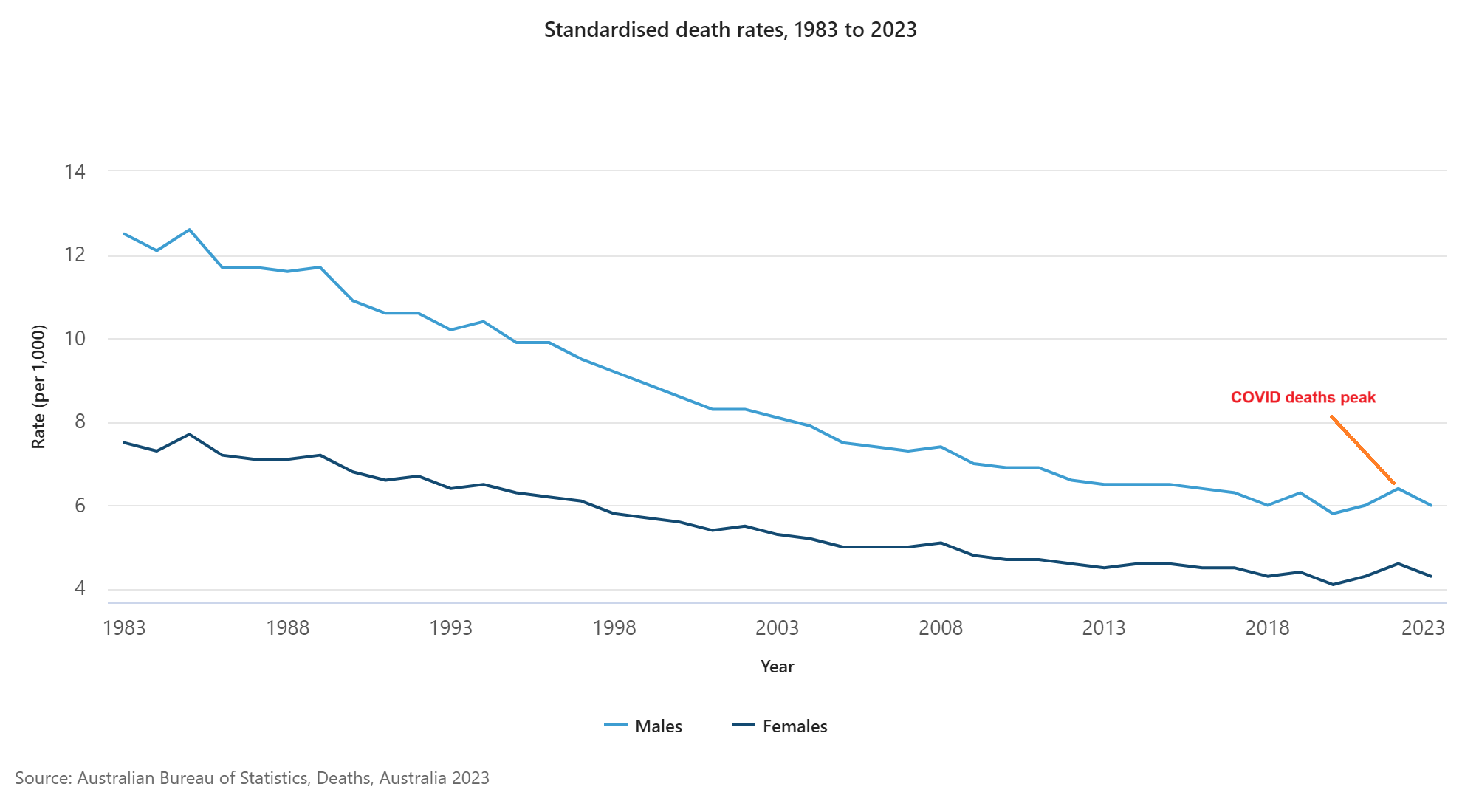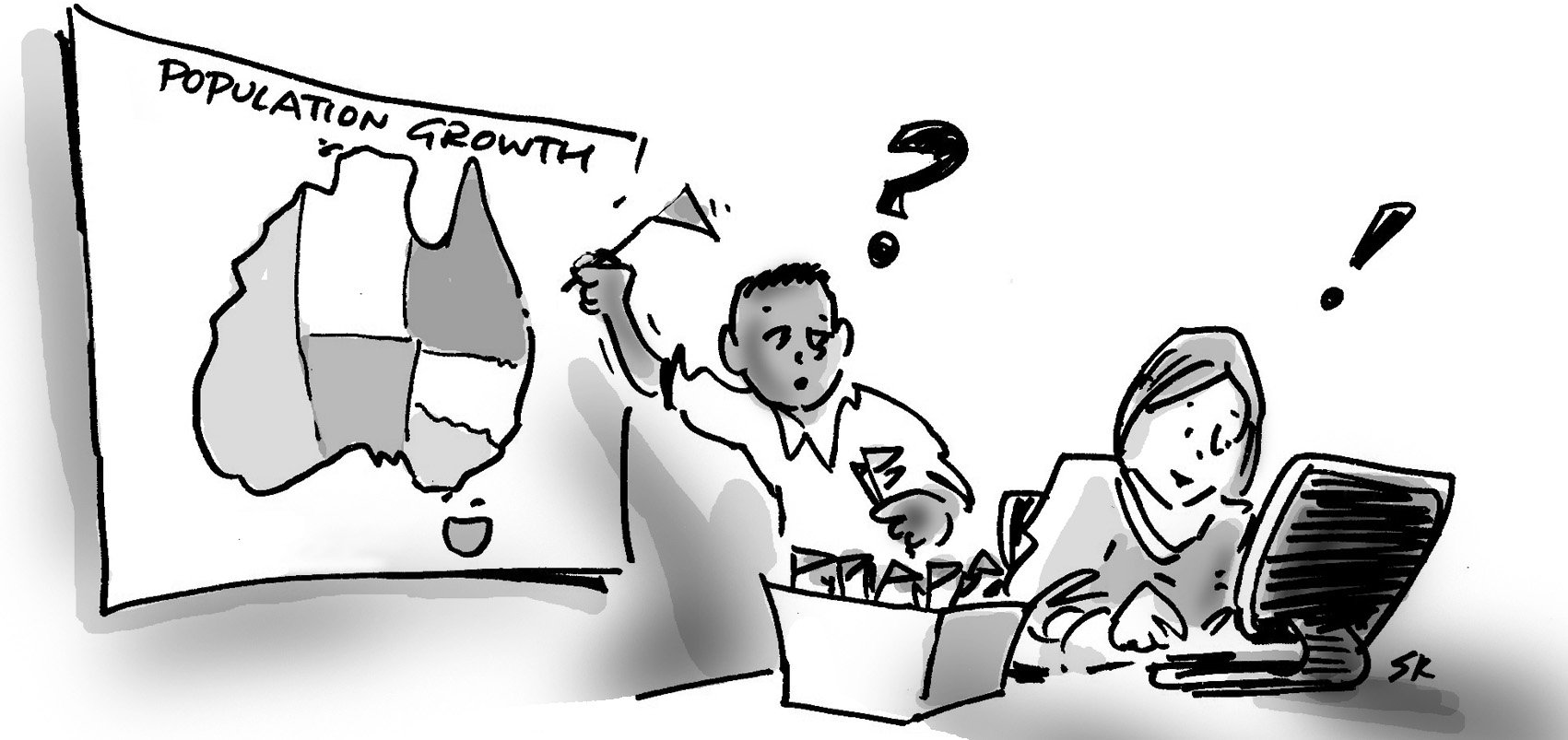BLOG
Migration within Australia – strongest out of Sydney
Migration within Australia – strongest out of Sydney
This is the third blog on the Regional Population Growth 2018-19, which was released in late March by the ABS. This publication looks at population in June 2019, and is the main source of population updates for all local areas each year. In this blog, Glenn looks at the movement between states, and particularly to and from Sydney, to see who are the winners and losers in the internal migration game.
Internal migration, or migration within Australia, is a major factor of population change in some parts of Australia. At the national level, its effect is zero, by definition, but some regions within the nation tend to gain population from other regions, while others lose.
This table shows on a state-by state basis where people are moving, in net terms. The table is a mirror image of two triangles. Reading down the columns, gains to a particular state from another are positive, and losses are negative. Reading along the rows, it’s the opposite.
| Gain of population (across) | ||||||||
|---|---|---|---|---|---|---|---|---|
| New South Wales | ||||||||
| Victoria | ||||||||
| Queensland | ||||||||
| South Australia | ||||||||
| Western Australia | ||||||||
| Tasmania | ||||||||
| Northern Territory | ||||||||
| Australian Capital Territory | ||||||||
| Loss of population (down) | ||||||||
| New South Wales | 0 | 6,190 | 15,341 | -63 | -804 | 1,431 | -500 | 468 |
| Victoria | -6,190 | 0 | 2356 | -2,618 | -3,915 | -162 | -967 | -702 |
| Queensland | -15,341 | -2,356 | 0 | -1,764 | -1,683 | 215 | -1,445 | -457 |
| South Australia | 63 | 2,618 | 1,764 | 0 | -58 | 101 | -682 | 152 |
| Western Australia | 804 | 3,915 | 1,683 | 58 | 0 | 243 | -433 | 181 |
| Tasmania | -1,431 | 162 | -215 | -101 | -243 | 0 | -155 | -25 |
| Northern Territory | 500 | 967 | 1,445 | 682 | 433 | 155 | 0 | 189 |
| Australian Capital Territory | -468 | 702 | 457 | -152 | -181 | 25 | -189 | 0 |
| TOTAL | -22,063 | 12,198 | 22,831 | -3,958 | -6,451 | 2,008 | -4,371 | -194 |
Source: ABS, 3218.0, Regional Population Growth, Australia via RIME estimates on ABS.Stat
A few interesting points.
- By far NSW has the biggest interstate movement in net terms – primarily to Queensland, accounting for nearly 3/4 of its outward movement. Quite a few are also moving to Victoria.
- Northern Territory, in population decline, is negative (losing population) to every other state and territory.
- Tasmania also gains most of its interstate movers from NSW, and is the only state or territory gaining population from Queensland.
- Western Australia is still losing population to everywhere except the NT. But these numbers are smaller than they were over the past few years.
The ABS has done an interesting chart on their publication page, looking at net migration at a capital city level, which I can’t improve on, so it’s replicated here.

Source: ABS, 3218.0, Regional Population Growth, Australia, 2018-19
This shows for each capital city in Australia, the estimated population change in one year (2018-19), in net terms. It shows that Sydney and Melbourne’s growth is overwhelmingly supported by high overseas migration. With our borders currently closed due to the Covid-19 pandemic, there can’t be any overseas migration, and if this continues for a while, this will hit next year’s population growth for Sydney and Melbourne particularly hard.
But Sydney and Melbourne differ markedly on the green bar segment – Internal Migration. While Melbourne shows a slight gain (more people move to Melbourne than away from Melbourne within Australia), Sydney shows a large loss – about 25,000 people more moved to other areas of Australia than moved to Sydney. Brisbane is the other area on this chart which shows a strong gain, and some of those Sydney migrants are moving to Brisbane.
Now currently many state borders are effectively closed due to Covid-19 as well – but these are likely to reopen well before international borders do, and probably will have a lesser effect on population movement than the closer to overseas arrivals.
Quite a few are moving to regional areas though. Let’s focus on movement out of Sydney, the largest single internal migration movement, and see where they are heading.
| Region of largest gain from Sydney (SA4 level) | |
|---|---|
| Net migration gain 2018-19 | |
| Central Coast | 3,678 |
| Gold Coast | 3,136 |
| Mid North Coast | 2,192 |
| Southern Highlands and Shoalhaven | 2,156 |
| Newcastle and Lake Macquarie | 1,704 |
| Sunshine Coast | 1,683 |
| Hunter Valley exc Newcastle | 1,682 |
| Richmond – Tweed | 1,653 |
| Illawarra | 1,368 |
| Melbourne – Inner | 1,285 |
| Capital Region | 1,223 |
| Central West | 1,180 |
These are the regions which gained more than 1,000 people from Greater Sydney in net terms in 2018-19 (in net terms just means there were more people who moved from Sydney to these regions than moved the other way). As you can see, the biggest exodus from Sydney is into coastal areas on the north coast of NSW, and to South-East Queensland, particularly the Gold Coast, which has always attracted a lot of people from Sydney. Also the Southern Highlands, Illawarra and Hunter Valleys gained strongly from this migration pattern. Movement across the ranges into Western NSW was smaller, but still a significant contributor to growth in the Central West and Capital Regions (Capital Region doesn’t include the ACT but is all the NSW areas surrounding, like Goulburn, Yass). While other NSW regions have smaller gains, not all showing on the table – only one lost population in net terms to Greater Sydney, and that was the far North-West of the state (Dubbo and beyond), losing about 100 people to Sydney.
The annual updates don’t break down by age, but our 5-year migration figures on profile.id do this, and generally show large losses for rural areas among young people into Sydney, with the gains being among adults and retirees. A lot of this can probably be attributed to high housing costs in Sydney, forcing people to look elsewhere, and being attractive for retirement outwards of home owners in Sydney.
Only one of these large net gains is to another capital city, into Inner Melbourne, which backs up this general regional exodus theory.
These detailed migration figures are not currently published at Local Government Area level in between Censuses, but total population growth and components of growth are. We have updated all the populations on our community and economic profiles, so you can always get the latest numbers for your area there. If you have any queries about this dataset or need something more customised for your area, please feel free to contact us on demographics@id.com.au, or using this link.
Glenn Capuano - Census Expert
Glenn is our resident Census expert. After ten years working at the ABS, Glenn's deep knowledge of the Census has been a crucial input in the development of our community profiles. These tools help everyday people uncover the rich and important stories about our communities that are often hidden deep in the Census data. Glenn is also our most prolific blogger - if you're reading this, you've just finished reading one of his blogs. Take a quick look at the front page of our blog and you'll no doubt find more of Glenn's latest work. As a client manager, Glenn travels the country giving sought-after briefings to councils and communities (these are also great opportunities for Glenn to tend to his rankings in Geolocation games such as Munzee and Geocaching).









